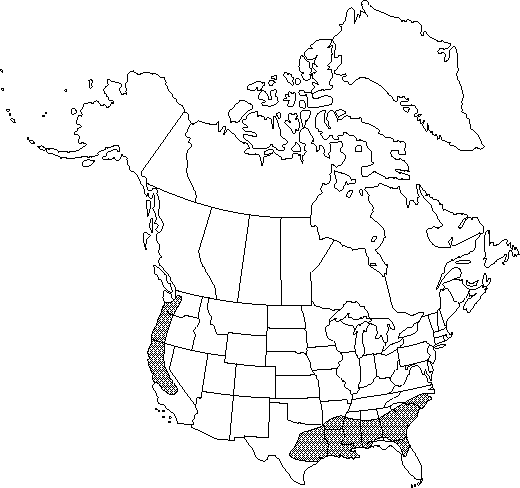familyRanunculaceae
genusRanunculus
subgenusRanunculus subg. Ranunculus
sectionRanunculus sect. Echinella
speciesRanunculus muricatus
Ranunculus muricatus
Sp. Pl. 1: 555. 1753.
Introduced
Treatment appears in FNA Volume 3.
Revision as of 21:49, 5 November 2020 by imported>Volume Importer
Stems reclining or erect, glabrous or sparsely pilose. Basal and lower cauline leaf blades broadly cordate to reniform or semicircular, undivided or 3-lobed, 2-5 × 3-6.5 cm, base rounded to cordate, margins coarsely crenate, apex rounded. Flowers pedicellate; receptacle hispid; sepals 5, reflexed, 4-7 × 2-3 mm, sparsely bristly; petals 5, 4-8 × 2-4.5 mm. Heads of achenes globose, 13-16 × 13-16 mm; achenes 10-20 per head, 5-5.5 × 3-3.5 mm, faces covered with long spines, glabrous, margin smooth; beak lanceolate, curved, 2-2.5 mm.
Phenology: Flowering spring (Mar–Jun).
Habitat: Fields and roadsides
Elevation: 0-2000 m
Distribution
Loading map...

Introduced; Ala., Ark., Calif., Fla., Ga., La., Miss., N.C., Oreg., S.C., Tex., Wash., South America, native to Eurasia, Africa, Pacific Islands, Australia.
Discussion
Selected References
None.
Lower Taxa
None.